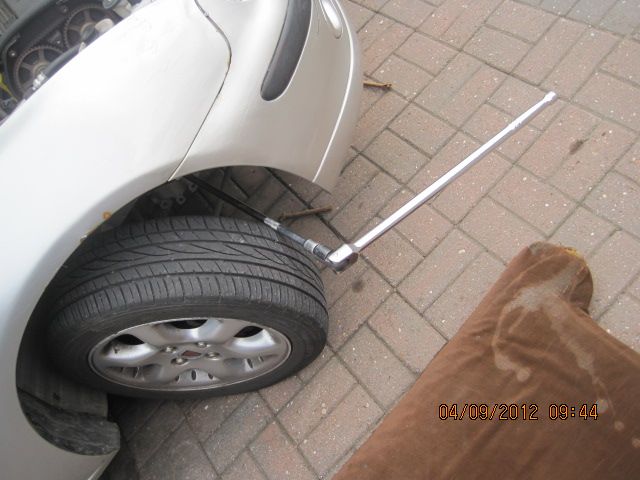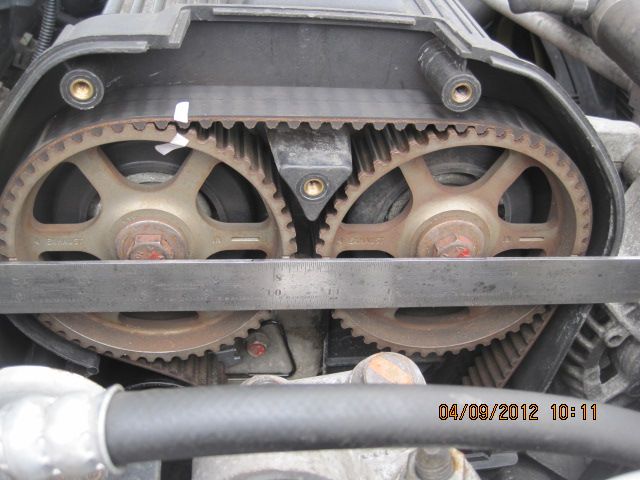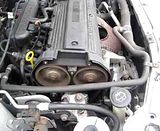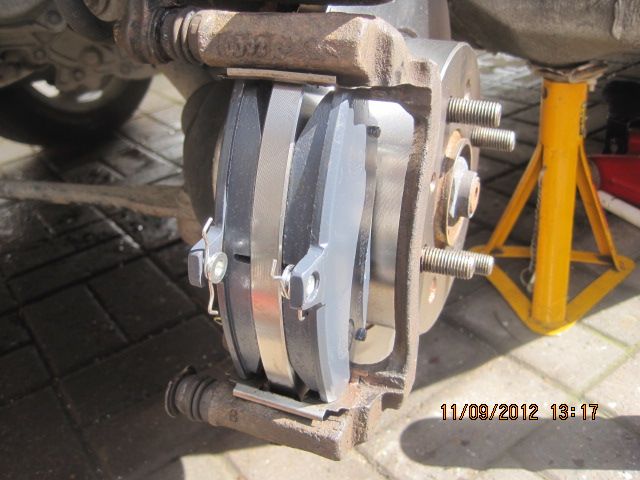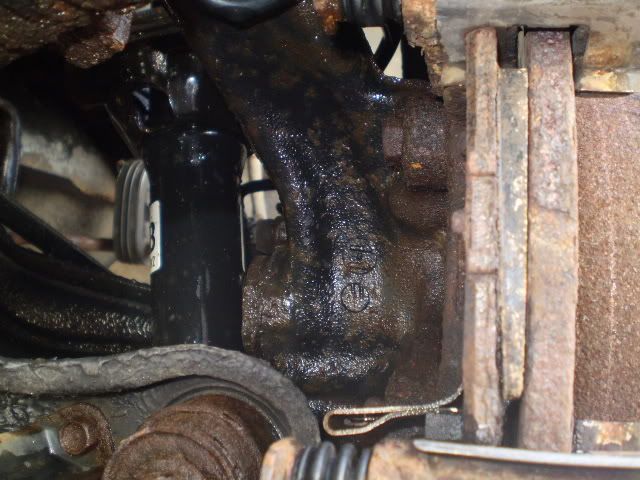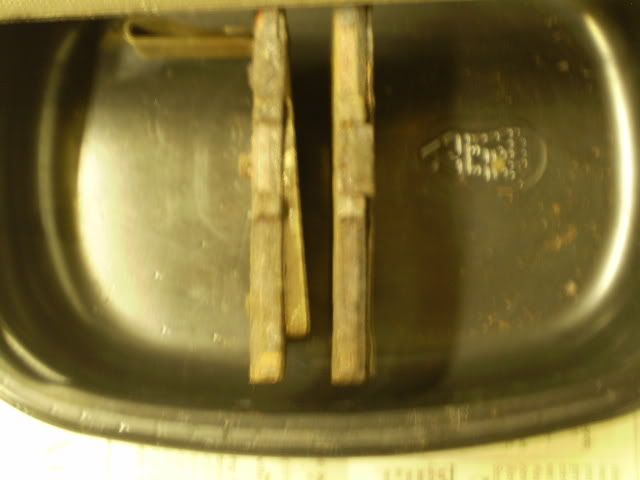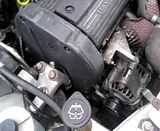These arrived 12:22 pm today, some twenty six hours after I paid for them on ebay. Excellent service from ebay seller parts2clear and the courier they use.
Got stuck in soon after 13:00 after a bite to eat. This fithy carrier needs cleaning:~
Cleaned and greased ready for new pads to slot in ... with fingers, not a big 'ammer like some folks use I could mention :~
Soon had the new Disc fitted to the nearside Hub and Pads slotted into their carrier :~
Closer view of new Pads in place :~
Rotated the Caliper down over the new Pads and fitted the 12mm retaining bolt. Then applied pressure on the Brake Pedal several times to prime the fluid and take up any slack between Brake Caliper Piston and the Pads. Nice firm pedal now as I like them to be :~
I used an Impact Driver and Club hammer to release the countersunk disc location screws. They were not corroded or overtightened as is often the case and in such good condition I used them again with a little copper based grease to reduce the chances of corrosion welding. Apart from road filth and surface corrosion, both Caliper Assemblies were in fine working condition. Even so, I cleaned all four Sliders and refreshed their lubricant with some LM Grease.
Then repeated the process on the OFF side assembly :~
Job done. Again a few pumps on the Brake Pedal to prime the brake hydraulics and take up any slack between piston and pads.
Then drove the car for a few miles and was delighted at the improvement in this little car's brakes. Superb and they will get better when fully bedded in. My son has a much safer car now.
One little tip which may prove useful. Rather than use a G-Cramp to retract the Caliper Pistons, I used a very stout screwdriver to slowly lever the old pads so that the piston became fully retracted to allow sufficient clearance for the much thicker new Brake Pads. Like this :~
That noise is still there with the engine running at anything above about 1100 rpm. That investigation is ongoing and when time allows, I'll make a systematic check of all likely suspects.
I hope you are right about that and it's something less serious.
.





